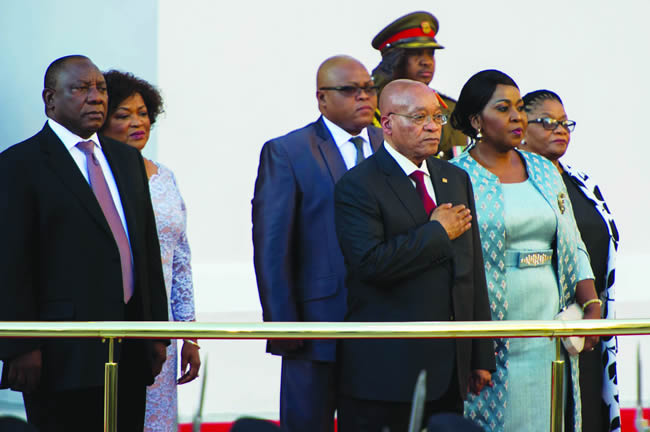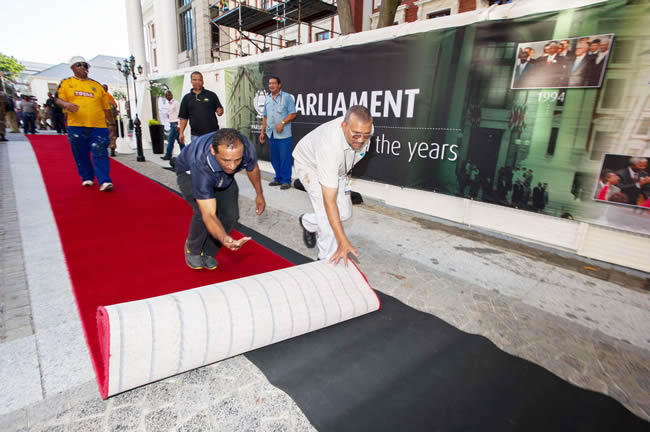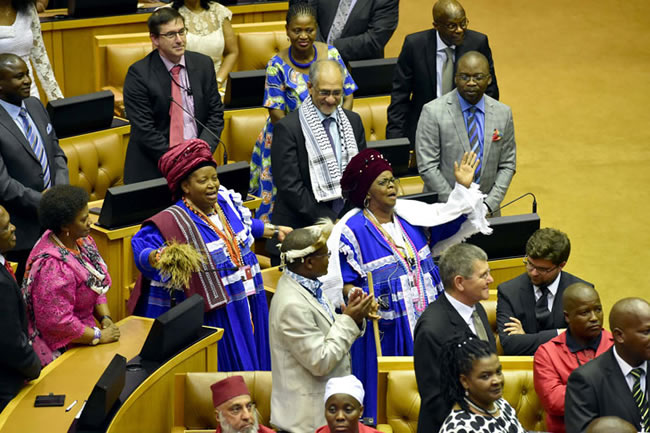 SoNA Special Feature
SoNA Special Feature
At the Opening of Parliament every February, the President of South Africa delivers the State of the Nation Address (SoNA), which outlines the country’s performance for the past year and plans for the year ahead.
During the SoNA the President addresses a joint sitting of the two houses of Parliament, the National Assembly and the National Council of Provinces. It focuses on the current political and socio-economic state of the nation.
President Jacob Zuma will deliver his ninth SoNA on 9 February where he will also outline government's Programme of Action (POA) for the year ahead. The POA is a system that monitors the implementation of the Medium-Term Strategic Framework (MTSF). The MTSF is government’s strategic plan for the 2014-2019 electoral term and the first five-year implementation phase of the National Development Plan. In keeping with customary proceedings, before the President makes his way into the National Assembly Chamber some ceremonial activities and cultural performances usually take place along the route and outside of Parliament. Cultural groups perform along the President’s route from the Slave Lodge to the National Assembly.
The significance of some of those activities:
The Presidential procession to the National Assembly Chamber
 The ceremony, which starts at the Slave Lodge just outside the entrance to the Parliamentary Precinct, is a combination of public participation and a formal state ceremony.
The ceremony, which starts at the Slave Lodge just outside the entrance to the Parliamentary Precinct, is a combination of public participation and a formal state ceremony.
As part of making Parliament more accessible to the people and to facilitate public involvement in law-making and other parliamentary processes, the public participates in the procession. This concept of public participation was introduced by former President Nelson Mandela.
Members of the public, including a Junior Guard of Honour (from the entrance of the Parliamentary Precinct to the end of the National Council of Provinces building), a Civil Guard of Honour and nine Eminent Persons, line the red carpet until the end of the Old Assembly Wing.
From the end of the Old Assembly building, the procession becomes part of a formal, state ceremony.
A Ceremonial Military Guard of Honour takes up positions in front of the National Assembly building and a military band sets up to the right of the building (the side nearest Tuynhuys) and plays the national anthem.
There is a 21-gun salute and an air force fly-past while the President takes the national salute from a special dais in front of the National Assembly building.
The 21-gun salute
 The tradition of bestowing a salute by firing cannons originated in the 14th century when cannons and firearms came into use. In 1842, the 21-gun salute became the international norm for the highest honour a nation rendered and it is fired in honour of the Head of State, the national flag, the Head of State of a foreign nation, a member of a reigning royal family and a former Head of State.
The tradition of bestowing a salute by firing cannons originated in the 14th century when cannons and firearms came into use. In 1842, the 21-gun salute became the international norm for the highest honour a nation rendered and it is fired in honour of the Head of State, the national flag, the Head of State of a foreign nation, a member of a reigning royal family and a former Head of State.
The red carpet
The original concept of rolling out the red carpet was originally reserved for kings and queens and signified a welcome of great hospitality and ceremony. Over time, the red carpet has been used to welcome Heads of State.
The presence of a praise singer
Praise singers have been a feature of the SoNA ceremony since 2005. Since then they have come from a variety of provinces and languages.
What happens after the State of the Nation Address?
- Political parties have an opportunity to debate, comment and raise questions on matters addressed in the President’s speech during a debate on the President’s State of the Nation Address.
- This debate usually takes place over two days in a joint sitting.
- The President will have the opportunity to reply to the debate.
Interesting fact
All guests in the public galleries of the National Assembly Chamber are able to listen to the SoNA in the language of their choice.
Besides the interpretation of the address into all 11 official languages, there is also South African Sign Language interpreting available for deaf people. Tactile interpretation is also available for Deafblind people present at Parliament.
The State of the Nation Address will be broadcast live on:
• SABC radio stations • SABC TV • Parliament TV (DStv Channel 408)



 Facebook
Facebook Twitter
Twitter WhatsApp
WhatsApp